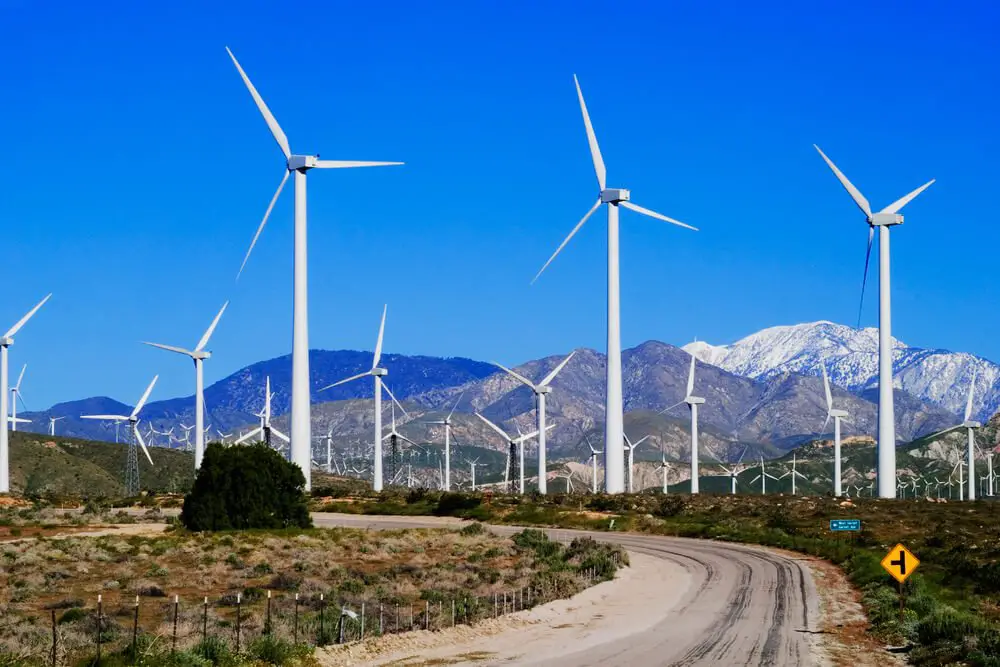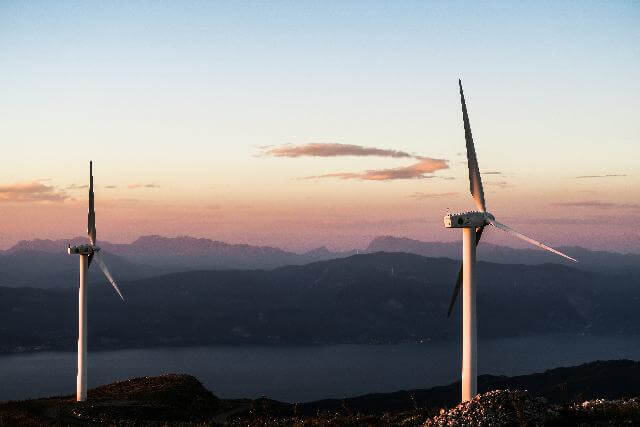While most renewable forms of energy can help to reduce air pollution, they also have their fair share of negative side effects and can pollute the environment in other ways.
But how? Well, Wind turbines tend to be a bit of an eye-sore….
Yes, visual pollution is a thing, and it can affect people and the environment in different ways.
What is visual pollution?
Visual pollution can be broadly defined as anything that obstructs a person’s view of a landscape or spoils a scene of natural beauty.
More specifically, it can refer to air pollution, buildings, and other structures, such as billboards and power lines, that ruin’s a person’s view of landscapes.
However, because beauty is usually in the eye of the beholder, this type of pollution is mainly subjective. This means that what one person finds aesthetically (dis)pleasing will differ from another.
How do wind turbines contribute to visual pollution?
1. The establishment of wind farms results in the destruction of the natural environment.
Large land areas are cleared to make space for wind farms, which results in habitat destruction and fragmentation. The turbines also pose another threat to wildlife due to their rotating blades, which can be fatal to birds and bats.
Some might argue that the destruction of the landscape to make way for wind farms is a “necessary evil” to reduce our reliance on non-renewable forms of energy, fossil fuels in particular.
However, there is also no denying that this will have a negative impact on local wildlife populations and may affect tourism in the area as well.
Thus, it seems that we are faced with a catch-22 situation: wind power provides us with limitless amounts of energy without contributing to climate change, but at the risk of losing the biodiversity and natural beauty of an area.
2. Wind turbines are enormous.
The standard height of an industrial wind turbine in the United States is around 70 meters, with approximately 50 meters long blades.
Wind turbines are giant because larger turbines generate more power and are arguably more cost-effective. However, larger turbines also come with another price tag: the visual degradation of the surrounding natural environment.
This is not only because wind farms encroach on the habitats of local wildlife but also because they are visible manufactured structures that can be seen even from a distance.
This can result in some visual annoyance for the people who live close to the wind turbines, especially those who reside in the sparsely populated rural areas where wind farms are often situated.
To minimize the visual impact of wind turbines in these areas, some wind farms have been constructed behind hills or other natural or man-made landmarks.
However, this is not always an effective solution as some wind turbines will always remain in view for the people who live nearby due to their geographical position.
Another measure that has been taken to ensure that wind turbines appear less visible is to paint them white. This is done to help them blend in with the skyline, but this is only effective when the turbines are seen from afar.
Thus, wind turbines can still have a substantial visual impact on the landscape simply because of their sheer size.
3. The rotating blades of wind turbines cause “shadow flicker”
“Shadow flicker” occurs when the sun is low on the horizon and shines through the spinning blades of a wind turbine. The blades cast moving shadows that periodically block the sunlight as they turn.
This creates a strobe effect and causes the light in front of the turbine to flicker, similar to when a light source is placed above a ceiling fan.
This type of visual disturbance can be very annoying for people who live near to wind farms and can sometimes cause headaches, dizziness, nausea, and, in extremely rare cases, epileptic seizures in people with photosensitive epilepsy.
Conclusion
Land-based wind turbines can be visually degrading for the environment, especially for those who live within the vicinity of a wind farm.
However, this is not to say that they should be completely discredited as a viable source of green energy. After all, their presence on the landscape is still far less detrimental to the planet than the effects of fossil fuels, which are the main contributors to climate change.
Thus, all things considered, wind turbines may indeed be regarded as the lesser evil when it comes to producing electricity to power our homes.
References:
Encyclopedia.com. n.d. Visual Pollution | Encyclopedia.com. [online] Available at: <https://www.encyclopedia.com/environment/educational-magazines/visual-pollution> [Accessed 21 September 2021].
Epilepsysociety.org.uk. n.d. Wind turbines and photosensitive epilepsy | Epilepsy Society. [online] Available at: <https://epilepsysociety.org.uk/about-epilepsy/epileptic-seizures/seizure-triggers/photosensitive-epilepsy/wind-turbines-and> [Accessed 22 September 2021].
Klæboe, R., & Sundfør, H. B., 2016. Windmill Noise Annoyance, Visual Aesthetics, and Attitudes towards Renewable Energy Sources. International journal of environmental research and public health, 13(8), 746. https://doi.org/10.3390/ijerph13080746
Sneed, A., 2017. World’s Largest Wind Turbine Would Be Taller Than the Empire State Building. [online] Scientific American. Available at: <https://www.scientificamerican.com/article/world-rsquo-s-largest-wind-turbine-would-be-taller-than-the-empire-state-building/> [Accessed 21 September 2021].
Windexchange.energy.gov. n.d. WINDExchange: Wind Energy Projects and Shadow Flicker. [online] Available at: <https://windexchange.energy.gov/projects/shadow-flicker> [Accessed 21 September 2021].





